Ask Ethan: Was The Critical Evidence For The Big Bang Discovered By Accident?

In science, breakthroughs don’t always begin with a ‘eureka’ moment. Sometimes, the true story is absolutely unbelievable.
When it comes to our Universe’s origin story, many competing ideas once thrived. Scientists considered a myriad of different possibilities, all of which were compatible with the full suite of data and the laws of nature, at least as they were known at the time. Yet as our measurements and observations of the cosmos improved, these possibilities were put to the test, with most of them falling away. By the 1960s, only a few possibilities remained, when something truly spectacular occurred: the “smoking gun” of the Big Bang was discovered. But was it a complete accident? That’s what Patrick Pallagi wants to know, asking:
The cosmic microwave background is a landmark evidence of the Big Bang origin of the universe. How come this discovery is labelled as an accidental one?
Sometimes, the best discoveries are the ones you don’t expect. Sometimes, you even scoop the scientists searching for what you’ve accidentally found.
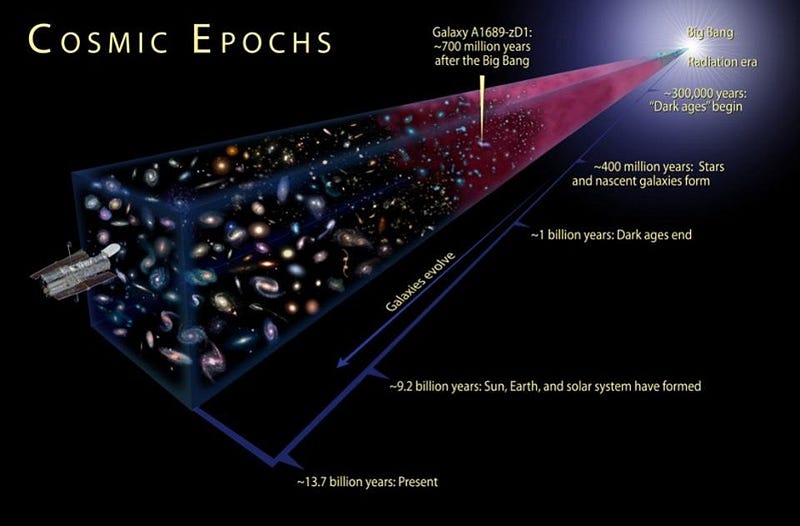
The idea of the Big Bang sprouted back in the 1920s, when scientists were first working out the consequences of a Universe governed by General Relativity. In a Universe that had roughly the same amount of matter-and/or-energy in all locations and with no preferred direction, a number of theoretical solutions arose. The Universe could not be stationary and unchanging, but needed to either be expanding or contracting, and could be spatially flat, closed, or open.
Just as, mathematically, the square root of 4 could either be +2 or -2, the field equations of General Relativity alone couldn’t determine what the Universe was made of, what its curvature was, or how the fabric of space itself was evolving with time. An enormous observational breakthrough, spearheaded by Edwin Hubble’s measurements of individual stars in what we now know are distant galaxies, paved the way to the expanding Universe.
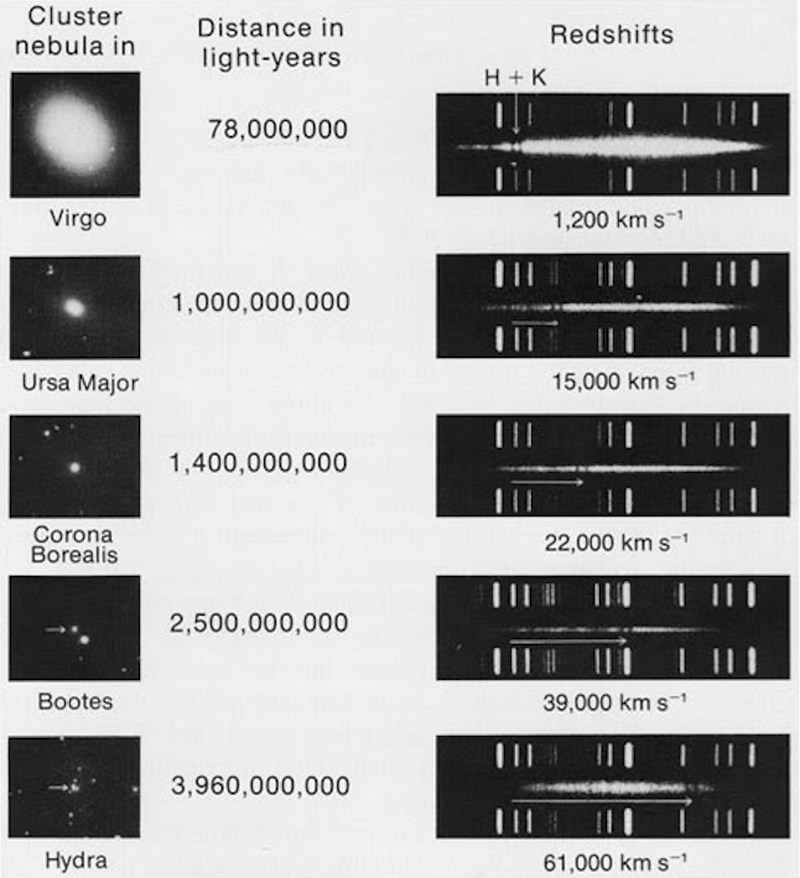
But over on the theoretical side, Georges Lemaître had already worked out one remarkable solution for the expanding Universe: one that began with what he called a “primeval atom,” which became the germ of an idea that would grow into the Big Bang.
If the fabric of the Universe is expanding today and driving distant, unbound galaxies apart from one another — the same way a ball of bread dough with raisins throughout it leavens and causes the raisins to apparently spread away from each other — then that should mean the Universe is getting sparser and lower in energy as time goes on. Densities drop and photon wavelengths stretch in an expanding Universe. But what was most remarkable about this scenario is that it meant the reverse is also true: if we look backwards in time, the Universe should have been denser and higher in energy.
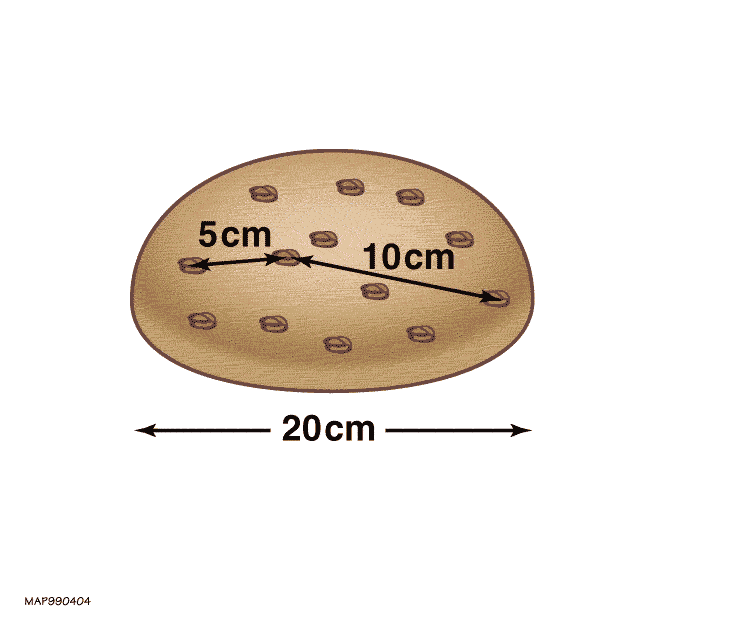
By the time the 1940s rolled around, Lemaître’s ideas — although nothing had demonstrated them to be incorrect — had failed to gain traction. However, George Gamow was extremely curious about them, and began a research program dedicated to developing these ideas. In particular, he noted that if the Universe was expanding while it was gravitating and cooling, the past would have looked very different from the present.
If you went back early enough, you should come to a time where stars and galaxies hadn’t yet formed, since matter needs time for gravitation to clump and cluster it together. At some point even earlier, the photons must have been hot enough to prevent the formation of neutral atoms, ionizing them faster than electrons and nuclei can form stable atoms. And even before that, the photons were likely hot enough to blast apart even atomic nuclei, creating a sea of protons and neutrons.
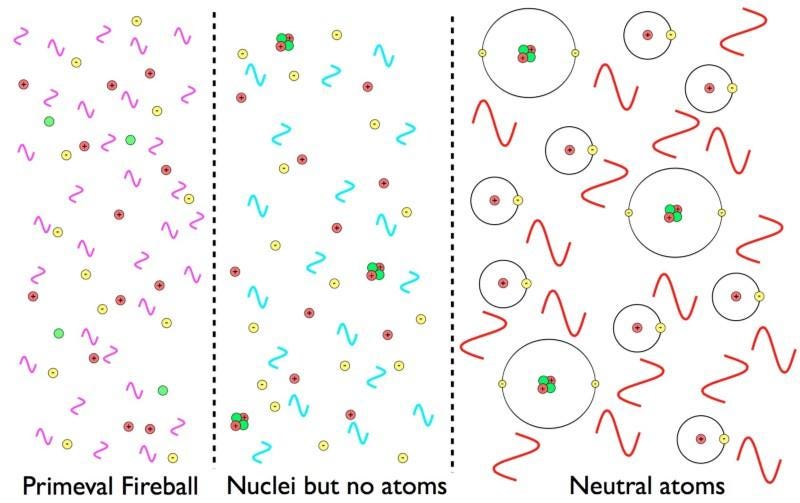
Those four theoretical predictions:
- an expanding Universe,
- where stars and galaxies and structure only formed and grew over time,
- where there was a moment of transition between the Universe being an ionized plasma and full of neutral atoms,
- and where the early hot, dense stage led to an epoch before stars where nuclear fusion occurred,
became the four cornerstones of the theoretical framework of the Big Bang.
Of course, the Big Bang wasn’t the only game in town; there were alternatives that made different predictions. The Steady-State Universe, for example, contended that the Universe was filled with a matter creation field that constantly created new particles as it expanded, and that the elements we see were made in stars. However, that idea of a transition between a plasma phase and a neutral-atom phase would prove to be the differentiator between the Big Bang and all the remaining alternatives.
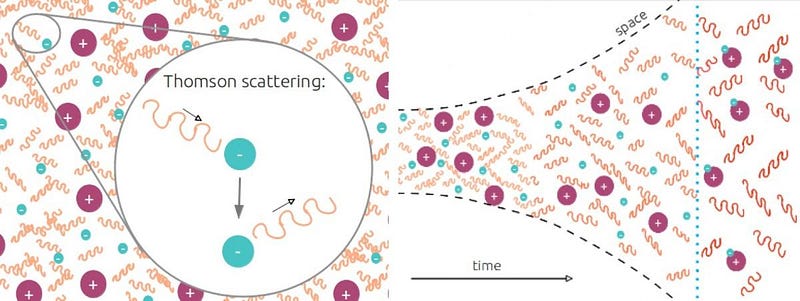
Gamow recognized that if the Universe was filled with both matter and radiation, the expansion of space would stretch that radiation to longer and longer wavelengths — and hence, lower energies and lower temperatures — over time. If we want to extrapolate back to a time where the Universe was hot enough to ionize neutral atoms, we’d have to go back to where the mean temperature was thousands of degrees.
No problem, obviously, thought Gamow. The key would then be to estimate how much the Universe had expanded from that early time until the present day. While Gamow and his students and research collaborators did their best, they only came up with a range of possible values for what this radiation should look like today. Once the Universe becomes neutral, those photons should just stream in a straight line, stretched by the expanding Universe, until they arrive at our eyes at just a few degrees above absolute zero.
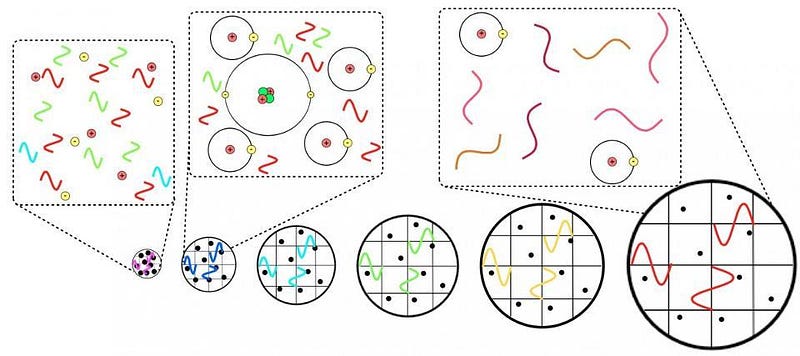
With the power of hindsight, it’s astonishing to realize what a missed opportunity there was. In 1949, electrical engineer Joseph Weber was hired as a professor and ordered by the University to go get a Ph.D. in something. He approached Gamow, introducing himself by saying, “I’m a microwave engineer with considerable experience. Can you suggest a PhD problem?”
Gamow simply told him “no.”
Which is really a shame, because after billions of years of cosmic evolution and the Universe expanding, the microwave portion of the spectrum is exactly where this leftover radiation from the Big Bang — today’s CMB (cosmic microwave background) and yesteryear’s primeval fireball — should remain today. The right microwave experiment would have revealed it; instead, Weber went on to build primitive gravitational wave detectors.
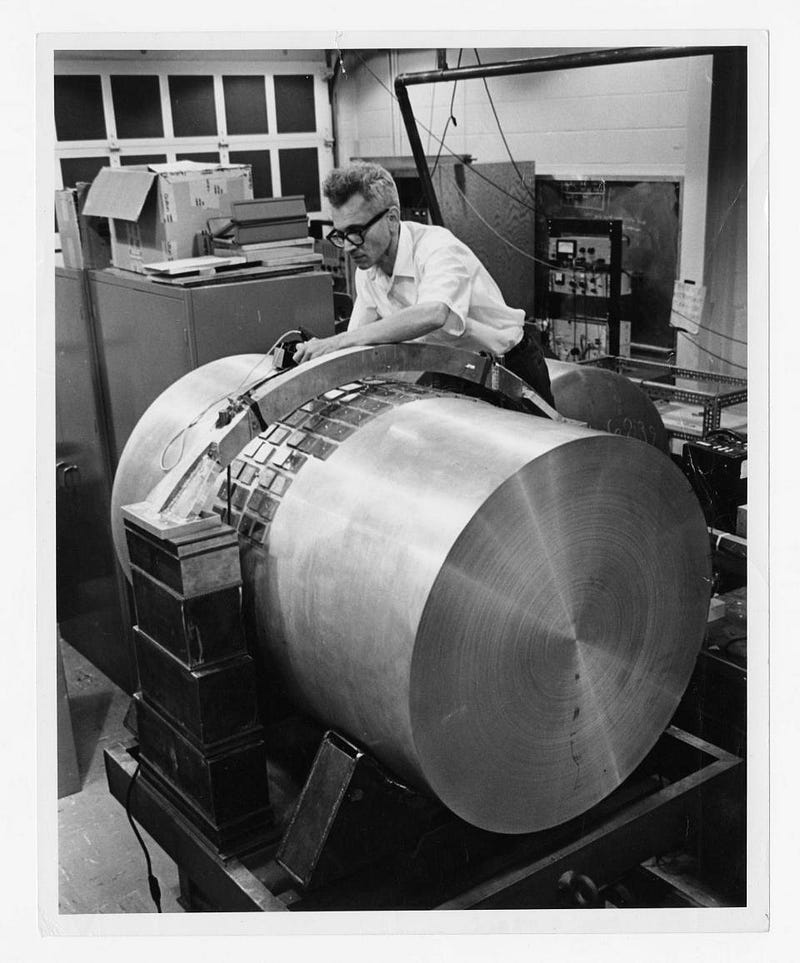
More time passed, and by the 1960s, a team of researchers at Princeton — including Bob Dicke, Jim Peebles, David Wilkinson and Peter Roll — starting planning a mission to detect this leftover radiation. Temperature estimates had gotten much better, and the development of a detector (a Dicke radiometer) that could find this radiation via a balloon-borne mission, coupled with Peebles’ theoretical work, made this an imminent possibility.
However, some 30 miles away, two scientists (Arno Penzias and Bob Wilson) working on satellite communications for Bell Labs (a subsidiary of AT&T) were using a brand new piece of equipment: the Holmdel horn antenna. It was giant, ultra-sensitive, and designed for receiving signals from Earth. However, there was a problem: no matter where in the sky they pointed their antenna, there was this annoying background of noise they just couldn’t seem to get rid of.

They tried everything. They tried turning it off and on again. They tried pointing it towards the Sun and then away from it. They used it during the day. They used it at night. They aimed it at the plane of the Milky Way. They even discovered pigeons roosting in the horn, resulting in a scene where they cleaned the nests out and mopped up all the bird droppings. Still, that background signal remained constant and omnipresent across the entire sky.
It was only after calling around and sharing their puzzlement that a visiting scientist — who happened to be the referee of a recent Peebles paper — suggested that this might be the long-sought signal of the CMB. Penzias and Wilson gave the Dicke group a call, and after a brief conversation, realized what they had discovered after all. Dicke’s voice rang out through the halls at Princeton, announcing “boys, we’ve been scooped!” Completely by accident, the smoking gun for the Big Bang had just been discovered.

Over the subsequent years and decades, the evidence for the Big Bang has strengthened by extraordinary amounts, with large-scale structure, primordial light element abundances, and the specific properties and temperature fluctuations in the CMB all in agreement.
But in 1964, it was a serendipitous accident that resulted in the discovery of the Big Bang’s leftover glow for the very first time. The scientists who unwittingly found it went on to win the Nobel Prize in Physics for their discovery, with Jim Peebles only getting his due 41 years later. Still, this truly accidental discovery only occurred because of Penzias’s and Wilson’s insistence on tracking down the source of that unexpected, omnidirectional noise. There’s an old saying that one astronomer’s noise is another astronomer’s data. By carefully examining every unexplained signal, even the ones you never anticipated, sometimes you can even make a discovery that revolutionizes the Universe.
Send in your Ask Ethan questions to startswithabang at gmail dot com!
Ethan Siegel is the author of Beyond the Galaxy and Treknology. You can pre-order his third book, currently in development: the Encyclopaedia Cosmologica.




